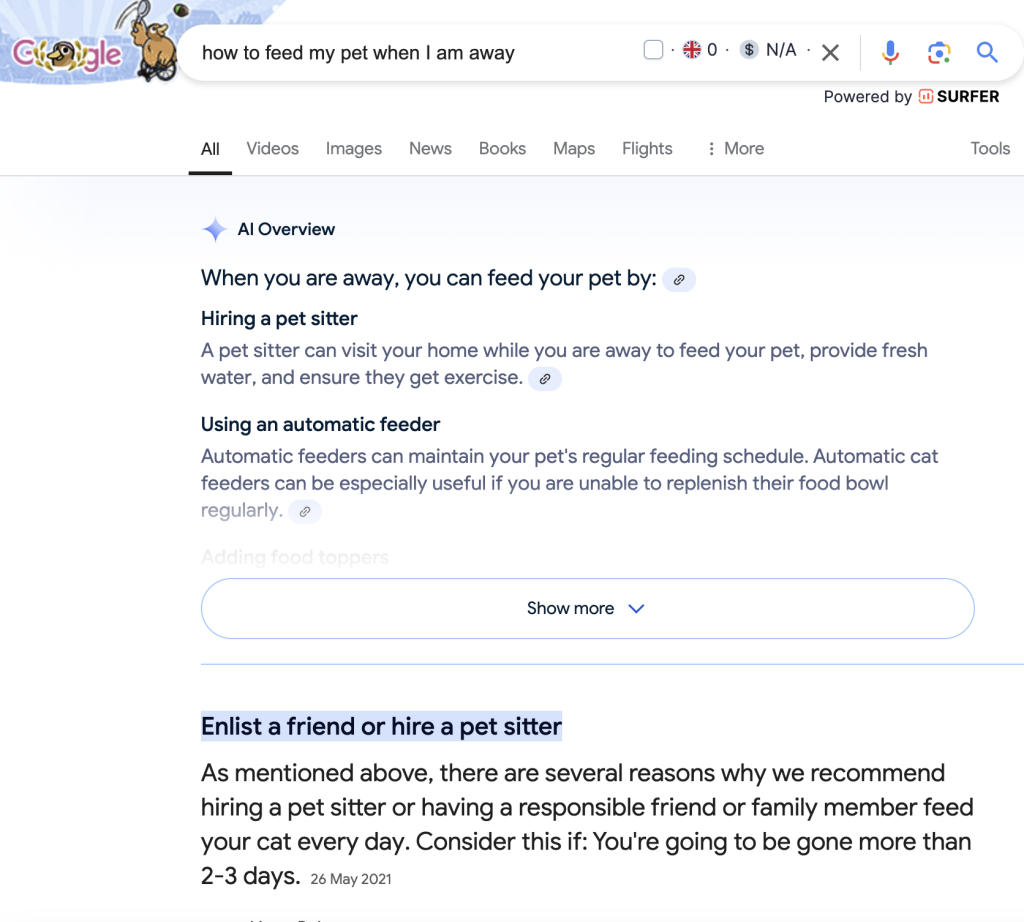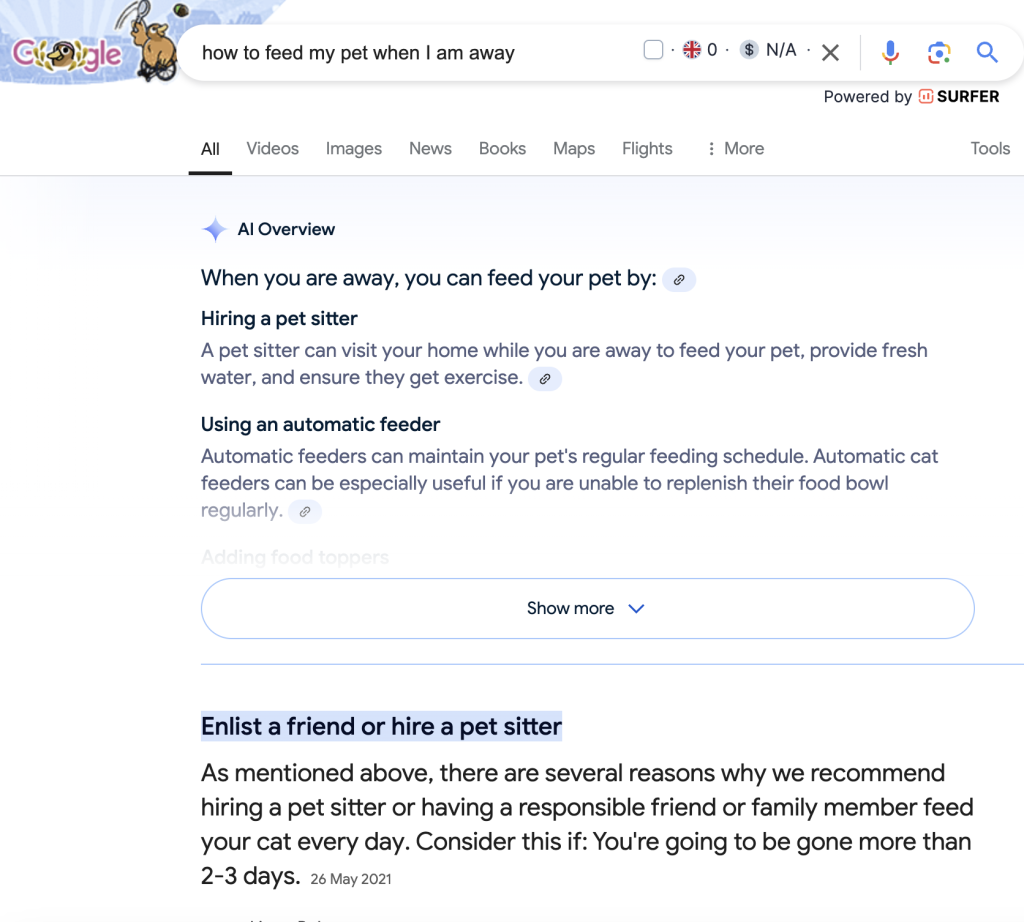
In-Market Lead Generation vs Out-Of-Market Demand Generation
Understanding the difference between in-market lead generation and out-of-market demand generation is crucial for a successful marketing strategy.
While both concepts share the goal of attracting customers, their approaches, target audiences, and outcomes differ significantly. Lead generation targets interested customers whereas demand generation spreads awareness of your brand.
Read on to discover how these strategies work together to fuel your business growth.
Contents
- Difference between Demand Generation and Lead Generation
- What is Demand Generation?
- What is Lead Generation?
- The Goal of Demand Generation vs Lead Generation
- Examples of Out-of-Market Demand Generation
- Examples of In-Market Lead Generation
- How to Combine Demand and Lead Generation
- How to Monitor Demand Generation
- How to Monitor Lead Generation
- Frequently Asked Questions
- Summary
Difference between Demand Generation and Lead Generation
Demand generation focuses on creating brand awareness, while lead generation turns that awareness into actionable leads.
Demand generation builds interest in your product or service, targeting a broader audience, while lead generation captures that interest when prospects are ready to engage.
Without a strong demand generation strategy, lead generation efforts often fall flat, as prospects may not be aware of your brand or its solutions. These two types of marketing combine together to make a great strategy, allowing you to convert leads into sales.
What is Demand Generation?
Demand generation creates awareness and interest in your product, positioning your brand as a valuable solution.
Demand gen targets potential customers early in their buying journey – often before they even realise they need your product.
That’s where demand generation steps in, informing and educating customers on the product or the problem they face. Your product or service will then be a solution to their problem. Make them aware of their problem, the solution and your brand or product – this will create an informed and valuable lead in the future.
Through educational content and long-term engagement, demand generation nurtures these prospects until they are ready to engage with your brand.
Building Awareness and Interest
Demand generation educates your audience and builds awareness through content marketing, social media campaigns, and influencer partnerships.
It introduces potential customers to your brand, gradually creating interest in your products or services.
Demand generation is often done through a multi-tiered strategy that can target and retarget customers through multiple channels including SEO, social media and advertisements.
Focus on the Top of the Funnel
Demand generation focuses on the top of the funnel, teaching the market about your industry and their problem.
Demand generation engages these prospects with valuable content, keeping your brand top-of-mind as they move closer to a purchase decision.
What is Lead Generation?
Lead generation focuses on converting interested prospects into qualified leads by collecting their information, typically through forms, landing pages, and gated content.
These are individuals who have shown a need for your solution and are ready to explore purchasing options.
The success of lead generation depends on the groundwork laid by demand generation, ensuring prospects are familiar with your brand when they engage.
Find out more about lead generation with our full guide.
Converting Interest into Action
Lead generation turns interest into inquiries by offering valuable, gated content such as whitepapers, demos, and consultations.
Potential customers share their contact information in exchange for deeper insights or personalised solutions.
Focus on the Bottom of the Funnel
At the bottom of the funnel, lead generation strategies target those ready to buy and aims to convert them into sales.
These efforts focus on capturing qualified leads who are actively considering your product and converting them into paying customers.
The Goal of Demand Generation vs Lead Generation
The goal of demand generation is to raise brand awareness whereas lead generation is to directly increase sales.
Here’s a comparison between goals, the timeline and metrics for demand generation vs lead generation:
Demand Generation
- Goal: Build brand awareness and product awareness
- Timelines: Top of funnel
- Measurements: Social media engagement, website visitors and impressions are used for demand generation.
Lead Generation
- Goal: Generate leads and increase sales
- Timelines: mid to bottom of funnel
- Measurements: Number of leads acquired, number of conversions and cost per lead.
Examples of Out-of-Market Demand Generation
Target individuals not actively seeking a solution or product using demand generation with content, social media, podcasts, partnerships and other strategies.
Content Marketing for Education
Demand generation through content marketing involves creating educational blogs and videos that answer common industry questions.
Positioning your brand as a thought leader engages prospects early-on and places you in a place of trust.
Use a blog, YouTube channel or pages on your website to inform and educate the customer-base, this could be optimised for search engines. SEO will allow you to tap into a market that may be searching queries or answers for their questions.
Social Media Engagement
Social media is crucial for demand generation.
Platforms like LinkedIn, Instagram, and Twitter help you build relationships and expand your audience through consistent, engaging content.
Social media gives your brand a voice to inform potential customers on the industry, your product and the problem they are unaware of. Once they are given more information about their problem, you can talk about the solution and that’s where your brand comes in.
Podcasts and Webinars
A popular demand generation strategy is to use podcasts and webinars online.
Hosting podcasts and webinars allows you to dive deep into industry topics, engaging prospects who are researching or unaware of their need for your solution.
Long-form media such as podcasts allow you to create trust and connection with an audience. This is a great way to start plugging the industry and talk about your brand’s story.
This type of platform allows for you to make people aware of your brand and that’s how demand generation works.
Brand Advertising and PR
Use brand advertisements and PR to create demand generation.
Investing in brand advertising and public relations campaigns increases your visibility, helping you reach audiences who aren’t yet in the market but may need your product later.
Traditional and digital marketing can help you tap into a future customer. You need to make them aware of your business now and then they could become a lead in the future.
Influencer Partnerships
Partner with influencers as part of your demand generation strategy.
Collaborating with industry influencers helps amplify your brand’s message, reaching audiences that might not be familiar with your company.
Influencer outreach is a popular demand gen method to communicating with a relevant audience. They have already built up a trusty connection with their audience and teaming up with them gives you trust and makes people aware of what you have to offer.
Examples of In-Market Lead Generation
In-market lead generation focuses on capturing prospects who are ready to make a decision.
SEO for Lead Capture
Use SEO for lead generation.
Optimising your website for search engines ensures you attract leads who are actively searching for solutions, improving visibility when it matters most.
When searchers visit a search engine for their query, you could rank at the top of the search results, ready to offer a solution. This is a great way to capture a lead that’s already interested in a product or has identified a problem that needs solving.
For instance, let’s say that somebody is asking about “how to feed my pet when I am away” – by answering and ranking for this as a pet store, you could then link out to your pet-feeder product.

Pay-Per-Click (PPC) Advertising
Use PPC ads for lead generation.
Targeting high-intent keywords through PPC ads places your business at the top of search results, capturing those who are close to making a purchase decision.
PPC is advantageous due to the immediate results but it can also be a costly method.
Targeted Email Marketing
Email marketing campaigns can help you land leads in your industry.
Sending tailored, targeted emails to prospects who have shown interest keeps your brand top-of-mind, guiding them through the final stages of their decision-making process.
Email marketing campaigns should be strategically done with a series of different emails.
Lead Magnets and Gated Content
Lead magnets are a great way to generate quality leads.
Offering lead magnets such as free guides or trials in exchange for contact information helps you capture qualified leads and nurture them towards a purchase.
This is done by offering free information for an e-mail address, phone number or other details.
How to Combine Demand and Lead Generation
Integrating demand generation and lead generation creates a seamless marketing strategy. Demand generation builds interest and brand awareness, while lead generation captures leads when they are ready to engage.
When nurturing prospects through the entire funnel, you create a steady stream of qualified leads that convert into loyal customers.
If you skip demand generation straight to leads, they are less likely to convert. Whereas by using demand generation first, you have more chance of converting your leads into customers.
How to Monitor Demand Generation
Demand generation can be monitored by various metrics including website visitors, engagement online and impressions.
In contrast to leads, demand gen boasts cosmetic metrics that often boost a business’ ego but it’s all for good reason. Increasing engagement on social media, your mentions and how many people make it to your website is an important part of the process.
You can monitor demand generation by recording the uptick in clicks, visits and engagement across all of your platforms.
How to Monitor Lead Generation
Lead generation monitoring is important and can be done through KPIs such as number of leads, cost per lead, conversion rate and number of quality or qualified leads.
Leads are more difficult to monitor but it can be done through lead monitoring strategies.
Use the following metrics to measure the success of your lead generation campaign:
- Number of leads
- Number of sales
- Conversion rate
- Marketing qualified leads
- Sales qualified leads
- Cost per lead
- Cost per acquisition
Frequently Asked Questions
What is the main difference between lead generation and demand generation?
Lead generation focuses on converting interest into actionable leads, while demand generation builds brand awareness and educates prospects about their problem or your product before they show buying intent.
Demand generation is about spreading brand awareness and building your reputation. Make customers aware of a problem and the solution in your product or brand before generating leads.
Both lead and demand generation can work together. When carrying out demand generation strategies you’re more likely to convert your leads in future.
Which comes first: demand generation or lead generation?
Demand generation typically comes first, as it establishes awareness and interest. Once prospects become familiar with your brand, lead generation captures and converts them into paying customers.
Before starting your lead generation campaign, you should begin a demand generation effort to let people know what you’re about.
How do I measure demand generation success?
Demand generation success is measured by metrics like website visitors, social media engagement, impressions, and overall brand awareness. These metrics reflect how well your brand is known and how engaged your audience is with your content.
Summary
Demand generation and lead generation shouldn’t be pitted against one another and instead should be used as the perfect marriage of brand awareness and sale conversions.
Putting demand generation work in before you gain leads goes a long way to creating and connecting with long-term, loyal customers.

About FatRank
Our aim to explain and educate from a basic level to an advanced on SEO and Social Media Marketing.
